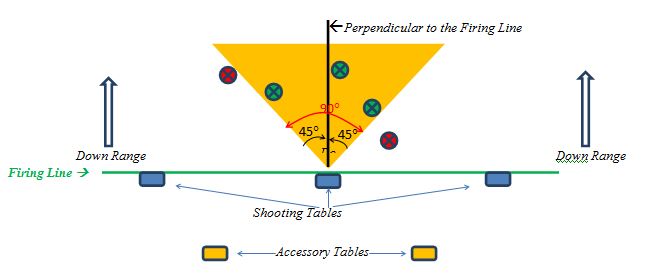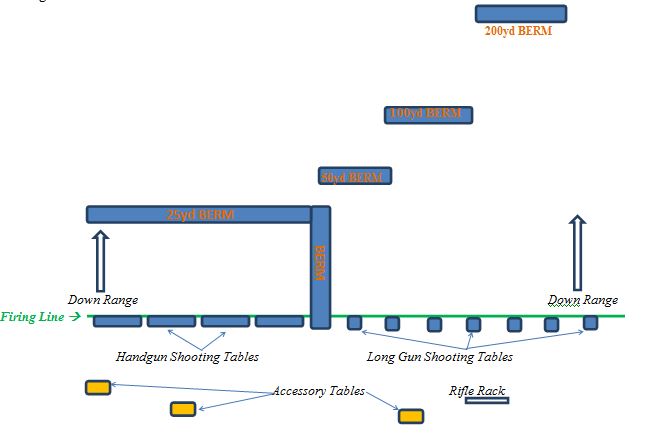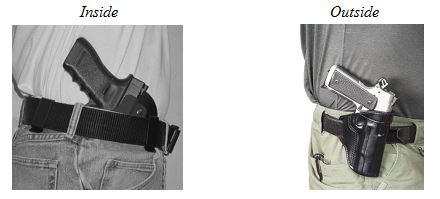Safety & Range Protocol Q & A
1. Where can I find the current SSSC safety rules ?
The universal Basic Firearms Safety Rules and the SSSC Range Safety Rules can be found:
a) On the New or Renewal Membership Application, and
b) On the Club’s web site, and
c) On a large multicolored sign prominently posted on side of the range clubhouse
2. Are there any additional safety rules during an SSSC sponsored shooting event ?
Yes. During any organized competitive, instructional, sight-in, or other SSC sponsored event, the event manager and Range Safety Officer (RSO) are responsible to ensure that all participants are reminded of the Four Basic Firearms Safety Rules, the applicable Range Safety Rules, plus advised of any added safety rules for the event. A pre-event safety orientation will be used to communicate this information.
3. What is the difference between a “general” and an “emergency” Cease Fire ??
A “general” Cease Fire is one called from time-to-time by the designated Range Safety Officer during sponsored events, or the person assuming the role of the Range Safety Officer during informal shooting activities, so that people may go down range to set, remove, or replace targets.
During the general Cease Fire, all guns must be holstered, or unloaded and tabled or racked with actions opened. No guns shall be touched in any way while anyone is down range.
An “emergency” Cease Fire is one called by anyone who suspects an unsafe condition—such as any person that steps forward (the down range side) of the firing line while the line is hot and shooting is taking place. Immediately upon an “emergency” Cease Fire being called out, all shooters should immediately stop shooting, and holster or table their guns until the unsafe condition is resolved.
4. Can you help me understand the “90-degree” or “45-degree” rule ??
The 90° and 45° rules are one-and-the-same depending on the point-of-view.
While on the firing line, the muzzle of any firearm should not deviate more than 45 degrees in either direction from a line that is perpendicular to the firing line…which is a total of 90 degrees.
This applies while guns are being: removed from or returned to gun cases; loaded and unloaded; presented from and returned to holsters, purses or fanny packs; worked on ( i.e. sight adjustments); or while shooting.
This requires that targets are placed so that shooting at the targets will not require breaking of the 45-degree plane.

5. Can you help me understand how the “firing line,” “shooting tables, and “accessory tables” are defined ?
The “firing line” is established by range design, and is a line that should not be passed when facing down range unless and until there is a cease fire period, or you are the only shooter on the range.
For general/informal shooting, the firing line is a line parallel to the front edge of the shooting tables. Shooters may sit at the tables, or stand beside or immediately behind the table. All shooting must be from that firing line, not in front of or beyond it, nor from more than the table width behind it.
For organized events the event manager and Range Safety Officer (RSO) may establish a different firing line for the event.
“Shooting tables” are permanently installed and either the long wooden tables on the handgun side of the range, or the metal seating tables on the long gun side of the range. Unless holstered, or racked, or being carried to/from your vehicles, the shooting tables are the only location for guns to be placed. Guns—whether cased or uncased—must be moved directly to/from the vehicle and the shooting table…and not during a cease fire while people are down range.
“Accessory tables” are mobile wooden tables placed behind the shooting areas. These are meant to used for placement of carrying bags, empty gun cases, extra ammo, water bottles, and other general items…but not for guns. Guns should not be cased or uncased at the accessory tables as this means the guns are being handled behind the shooting tables.

6. What do I do if the range gate is open when I arrive?
The range gate automatically opens and shuts after each individual has put in their gate code. If the gate malfunctions and does not open or close contact the club immediately.
Simply stated, the reason is to mitigate our liability and keep our range. We need to take common sense steps to prevent unauthorized non-members from coming onto the facility and possibly getting hurt, or hurting someone else.
An exception may be made by the Board of Directors to authorize a Club sponsored event’s designated Range Safety Officer to leave open the gate and monitor/control range activity.
7. What should I do if I witness unsafe behavior ?
The SSSC insists that it is the responsibility of every shooter at the range to ensure the safety rules are being followed by all shooters.
While it may be difficult to approach someone about a safety infraction, it is for their benefit as well as yours to do so. Typically, the offender will apologize if the infraction is pointed out politely with an explanation as to why it is unsafe.
Should the offender become belligerent, or refuse to change his or her unsafe behavior, you should note their name or vehicle license number, and report the observed safety incident to the SSSC e-mail address (sssc8@live.com). You also may want to consider leaving the range so as to remove yourself from a potentially dangerous situation.
Two examples of frequent safety infractions:
- While downrange managing your targets during a cease fire, you notice someone messing with his or her gun at their shooting table, i.e. adjusting sights, or uncasing/casing guns. As soon as you can, you should ask the person to please not touch their firearms while people are down range during a cease fire.
- While on the firing line, you witness a person breaking the 45-degree rule, pointing a muzzle in your direction. You should ask the person to not point their muzzle at you, and remind him or her about the 45-degree plane.
In either of the above examples, the person may explain that the gun is unloaded…politely ask them to see Rule #1 – “all guns are always loaded.”
If necessary, contact the Sheriff’s office. Their number is posted on the board on the side of the clubhouse, or dial 911.
8. Do I understand that there are target stands supplied by the Club ?
Yes. Target frames are provided by the Club—constructed/maintained by Club members—for use by the members. These frames are available in the oil storage tank, and must be returned to storage after use.
Also, a steel target is permanently located at the 200 yard berm.
9. Can I bring my own targets to the range ?
Yes. However, only Club approved targets are permitted:
- Printed or silhouette paper, cardboard, wood or plastic targets—stand alone or stapled to target stands
- Clay birds
- Bowling Pins
- Soft plastic containers
Remember ~ It is your responsibility to clean-up the range after your use. Remove and trash the used targets, and any fragmented pieces of your targets.
Some targets are safety or fire hazards, and are strictly prohibited, i.e.: glass, cans, rocks, cinder blocks, propane tanks, exploding material (including Tannerite). Use of these kinds of targets may cause you to lose your membership.
10. Can I use my own steel targets ?
No. Only pre-approved, Club sponsored events may utilize steel targets.
While the Club’s board of directors appreciate that there are benefits to steel targets for practice and fun, we also recognize that there are safety trade-offs. Steel targets can be safely used if they are properly constructed, maintained and placed on the range. As the range is unsupervised however, the proper construction/use requirements cannot be monitored to provide a safe environment for all range participants.
The Club has installed a steel target at the 200 yard berm. Armor piercing or steel-core ammunition is not permitted for use with this target.
11. Are there any ammunition restrictions ?
Yes. To prevent fires that can devastate our area, incendiary and tracer ammunition is strictly prohibited. If shooting at the Club’s 200 yard steel target, armor piercing or steel core projectiles must not be used.
12. Can I shoot my 50 BMG rifle at the range ?
50 BMG ammunition is currently acceptable, but under review by the SSSC BOD due to its long distance destructive capability. Please remember to maintain strict muzzle control—just a 10-15 degree muzzle elevation could clear the top of the 200 yard berm.
13. Can I shoot an automatic machinegun or sub-machinegun at the range ?
Yes. Please consider your target setup and others at the range when shooting an automatic. For example, you should alert other range participants that you are about to shoot an auto.
14. Can I practice drawing my handgun from a holster or various methods of concealment ??
Yes, with the following clarification:
If no one else is at the range, drawing from any form of concealment is permitted.
For general safety reasons however, if others are on the range, only drawing from a strong side belt holster (open or concealed) is permitted.
A strong side belt holster is defined as either inside the waistband or outside the waistband that is affixed to a waist belt, positioned in a neutral (straight) or only slightly canted vertical orientation, positioned on the belt so that the trigger pad is approximately along the centerline of the body (straight down from the armpit).

Before practicing weapon presentation using open or concealment methods, the Club’s BOD strongly advises taking training from a competent personal defense instructor.
15. I notice a flagpole at the range. When is it used ?
At all SSSC organized range activities, the range flag should be posted. When posted, any member wishing to use the range must obtain permission from the event manager of Range Safety Officer (RSO).
16. What are my responsibilities regarding range clean-up ?
Each Individual Member is responsible for brass and trash cleanup for him/herself as well as invited Guests. Several trash cans and brass buckets are located throughout the range for your use. If the trash cans are full, please feel free to empty them into the dumpster or contact the club so we can go out to empty the cans. If the dumpster is starting to get full let us know so we can schedule a trash pickup.
Some shooters feel that smaller caliber casings, i.e. 22lr, don’t need to be picked-up. This is an incorrect assumption…who else should pick-up the shooter’s small caliber brass ??
With the exception of biodegradable material—i.e. clay birds—fragmenting targets are frowned upon as these fragments accumulate over time and degrade the looks of the range.
At least once per year, the BOD organize a general range clean-up day. We appreciate any and all members who participate to keep our range looking good…and we have fun too !!